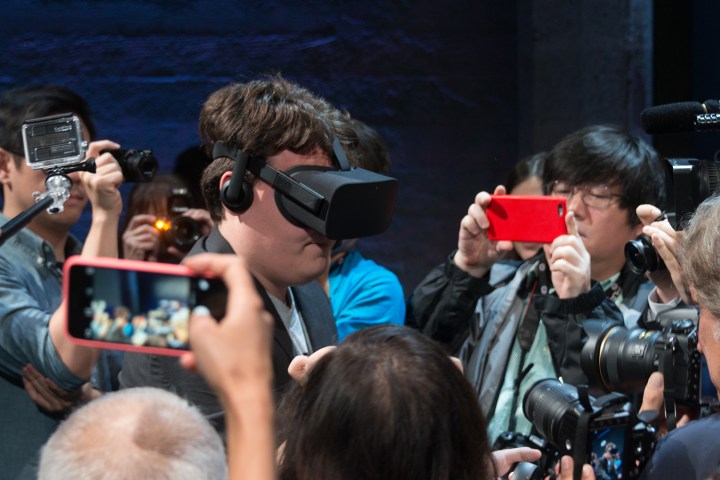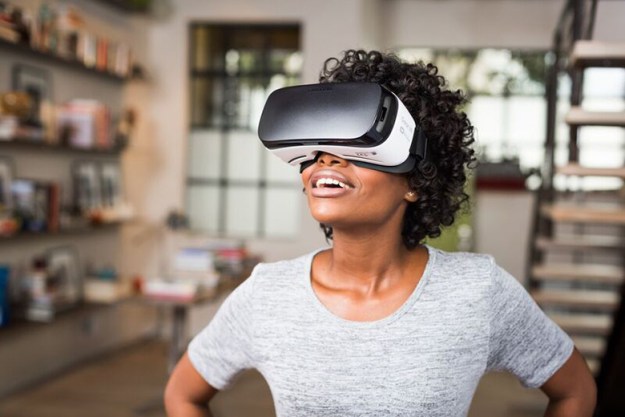
Honestly, you have to strap on the Rift to understand what the fuss is all about. Sure, you may have played around with Google Cardboard, and it’s a cool cheap thrill, but that experience is nothing compared to what the Rift can generate. It’s truly immersive, and removes the constraints generated by normal everyday apps and games. Look over your shoulder and you’re still on that virtual roller coaster. You can even watch butterflies flap around your face that “feel” like they’re really there.
Related Offer: See Oculus Rift virtual reality headset and desktop Bundles here
Thankfully, the wait for the Oculus Rift is nearly over. The headset may cost a hefty $600, but it’s worth every penny if hopeful owners have a compatible desktop. Technically, consumers have four days to prepare for the Rift, as deliveries begin on March 28. Oculus VR CEO Brendan Iribe has even jumped onto Twitter to show that the first unit has already shipped. This has to be an exciting time for the company (and Facebook), who has worked tirelessly on the Rift for so many years.
Oculus VR announced earlier this month that 30 VR games will be made available to Rift owners this Monday. The company also launched a new Oculus Home for the Rift, an interface built from the ground up for VR. Oculus Home allows viewers to find new Rift-ready content, connect with friends, and explore their library of apps and games. There’s also an Oculus desktop app for customizing the Rift and browsing through content listed in the Oculus store.
So what does it take to get the Oculus Rift up and running? If you don’t have a compatible PC, there are a number of official pre-built solutions provided by Alienware ($1,000 and up), Asus ($950 and up), and Dell ($1,000 and up). If pre-built is not your cup of tea, then you’ll need this list of recommended components to get the most out what the Rift has to offer:
CPU: Intel i5-4590 equivalent or greater
GPU: Nvidia GeForce GTX 970 / AMD Radeon R9 290 equivalent or greater
RAM: 8GB or more
Video: HDMI 1.3 output
Input: 3x USB 3.0 ports and a single USB 2.0 port
Platform: Windows 7 SP1 64-bit or newer
Not sure if your desktop or laptop is ready for the Oculus Rift? The company provides a free tool here (scroll down towards the bottom for the “Recommended PC Specification” section) that you can download and run locally on your hardware. It’s a lightweight program that quickly determines what’s installed on your desktop or laptop, and explains why a certain component failed inspection and what to do about it.
While the Oculus Rift may be the first high-end VR headset out the door, the HTC Vive isn’t too far behind. Slated to arrive on April 5 for a meatier $800, this unit is backed by Valve Software’s SteamVR platform and is capable of room-sized VR experiences. Valve even recently revealed during GDC 2016 that Steam-based games will be playable on the VR headset in a projected Desktop Theater Mode. Very cool.
That all said, what will be interesting to see is which VR headset will come out ahead. The Oculus Rift has been in the news for quite a while and has a cheaper price tag. The HTC Vive, on the other hand, is more expensive and has been in the public eye for only a short while. Like the console wars, the VR wars will depend heavily on content and performance in determining who will come out on top. We can’t wait to see it all unfold.
Editors' Recommendations
- This new VR headset beats the Vision Pro in one key way and is half the price
- The Vision Pro SDK has arrived. Here’s what it’s revealed so far
- Apple’s VR headset has no killer app, prominent leaker warns
- Leak reveals how Apple VR headset’s hand tracking may work
- Apple’s secret VR headset just leaked an ingenious idea


